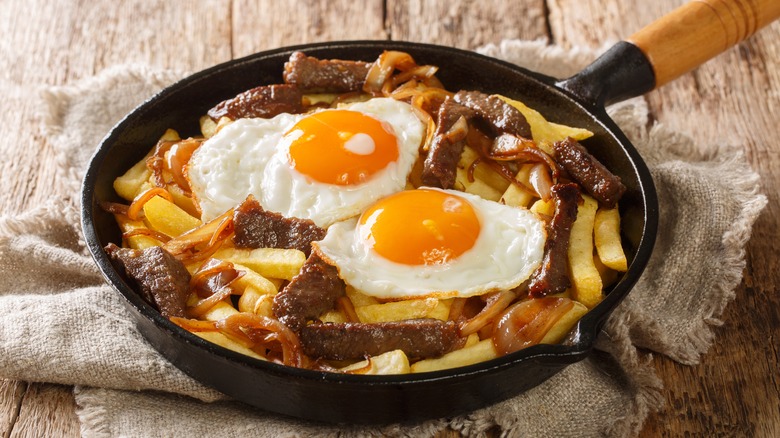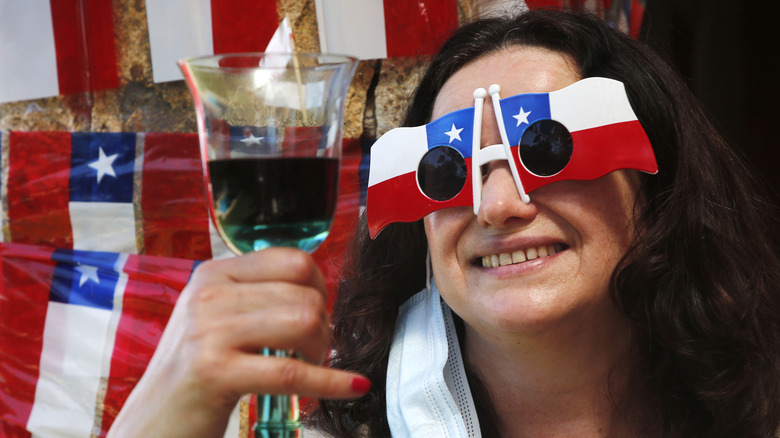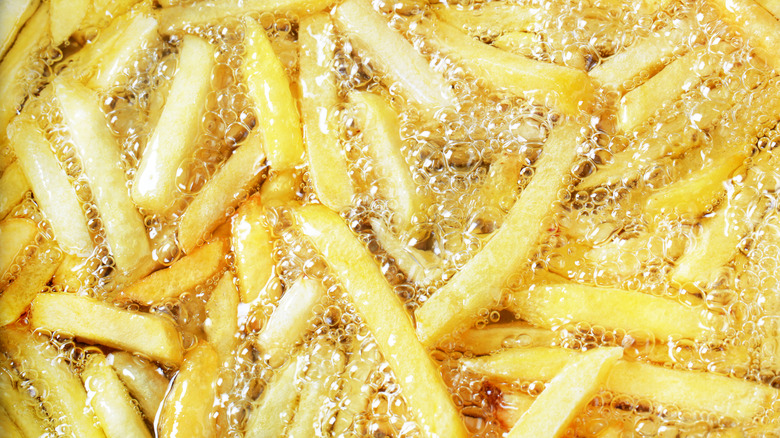Chilean Chorrillana Is The Shareable Appetizer That Comes Piled On French Fried Potatoes
Culinary cultures on every continent have a proprietary form of pub fare, usually consisting of calorie-laden fried grub to soak up an afternoon or evening of drinking. In Chile, that dish is chorrillana. In its simplest form, chorrillana is a giant plate of french fries topped with fried, spiced onions and strips of beef. It's a mainstay of Chilean cantina cuisine and has become a national treasure with its own holiday, Dia Nacional de Chorillana, celebrated on the 14th of August.
Countless variations of chorrillana have emerged over the past decades, allowing different regions to customize their toppings. Common additions include: fried or scrambled eggs, sausage, and chicken. The dish is comparable to Canadian poutine, British fish and chips, and salchipapa, another loaded, Latin American french fry dish sold on the streets. Chileans link chorillana to another popular Chilean dish known as "lomo a lo pobre," a classic steak and eggs concoction served with french fries for lunch and dinner.
However, these other national fried dishes usually come in single-sized portions wrapped in newspaper or on paper plates to gobble at the bar or on the streets. Chilean chorrillana is a shareable appetizer, placing emphasis on the social and communal aspects of drinking and dining with friends and family.
Disputed origins of chorrillana
There are various origin stories for chorrillana and no authoritative source to settle the debate. The first dispute stems from its name: Some believe it comes from the verb "chorrear," which means to drip, referring to the oils descending from the mountain of onions, beef, and fries to form a sizable puddle of grease at the bottom of your plate. Others think it comes from the name of a famous battle during the 19th century Pacific War that occurred in the Peruvian town of Chorillo.
Consequently, the first origin story starts with the Battle of Chorillos. It asserts that Chilean soldiers dined on hearty plates of chorrillana thrown together with all available wartime provisions. Another story places chorrillana's origins in a social club in the northern Chilean province of Copiapo in the 1950s, where cooks invented chorillana as an offshoot of the Peruvian plate Lomo a la Chorrillana.
Most Chileans think chorillana is a Valparaisan specialty, arguing that it began in the cantinas surrounding Valparaiso's universities. Valparaiso native and longtime cantina owner Victor Suarez claims he invented the dish to give college-aged patrons something to soak up all the beer they were consuming.
How it's made and eaten
Chorillana is a messy, labor-intensive dish usually enjoyed outside of the home, at cantinas or fast food chains around Chile. Its various components are prepared separately, then piled on top of each other shortly before serving. Restaurants let customers personalize their mountains of meat and potatoes, choosing from a diverse list of toppings including pork sausage, seafood, fried eggs, and mushrooms, to name a few.
Families and groups of friends gather in the afternoon or at night around a large plate of chorrillana to dig in family-style, spooning heaps of loaded fries onto individual appetizer plates to pair with a pint of beer or soda. It's more practical and economical to eat chorrillana at a pub, where it's a common menu item. However, Chileans living abroad and ambitious cooks alike can make it at home.
Timing is important when it comes to making chorillana, as you want to serve it while the fries are still crispy and fresh. Cutting and frying the potatoes first gives them time to release excess oils while you fry the meat in a separate pan. The next step is frying onions with either tomato paste and a dash of merken, a Chilean seasoning similar to smoked paprika. Assembling the mountain of fries, onions, and meat is the final, tantalizing step before you, your family, and your friends gleefully tear it apart.


